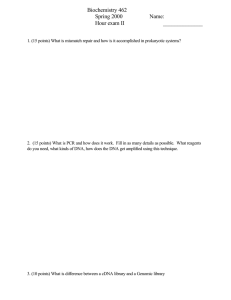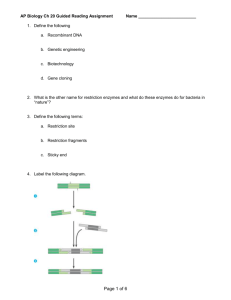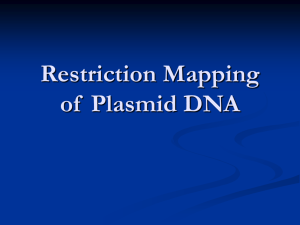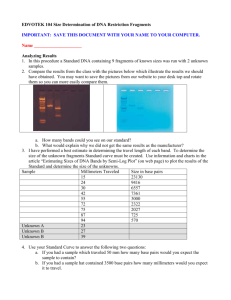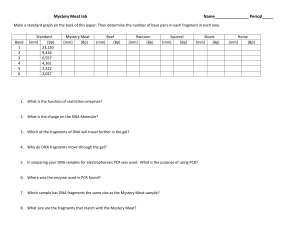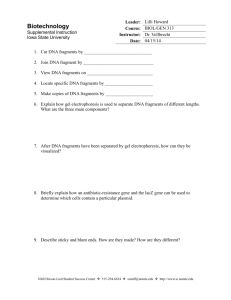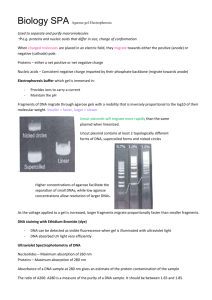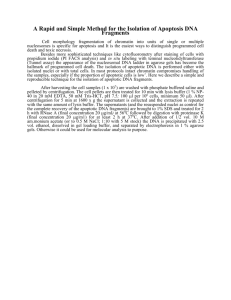Southern Blot
advertisement
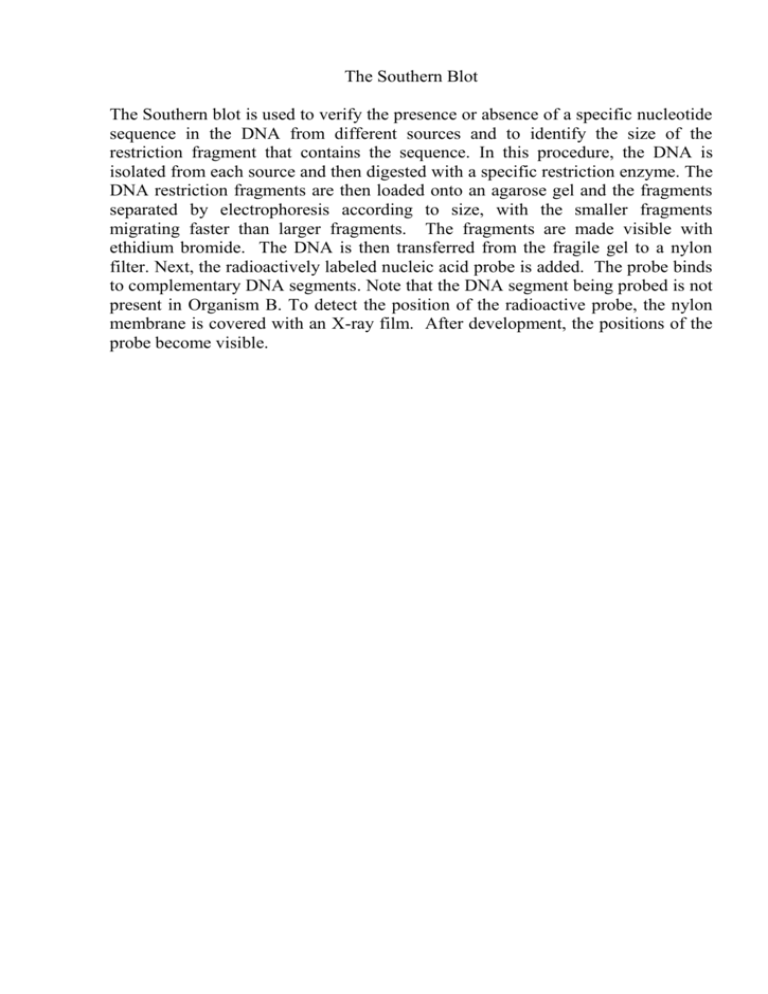
The Southern Blot The Southern blot is used to verify the presence or absence of a specific nucleotide sequence in the DNA from different sources and to identify the size of the restriction fragment that contains the sequence. In this procedure, the DNA is isolated from each source and then digested with a specific restriction enzyme. The DNA restriction fragments are then loaded onto an agarose gel and the fragments separated by electrophoresis according to size, with the smaller fragments migrating faster than larger fragments. The fragments are made visible with ethidium bromide. The DNA is then transferred from the fragile gel to a nylon filter. Next, the radioactively labeled nucleic acid probe is added. The probe binds to complementary DNA segments. Note that the DNA segment being probed is not present in Organism B. To detect the position of the radioactive probe, the nylon membrane is covered with an X-ray film. After development, the positions of the probe become visible.

